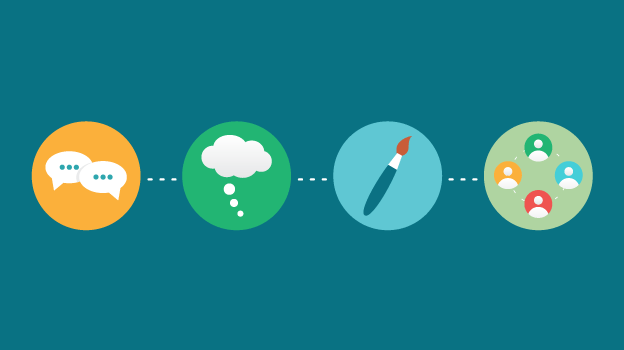The 9 elements of digital citizenship your students need to know
In an ideal world, the online environment is a safe and secure space where everyone feels protected. This truth applies particularly to modern students, who are growing and learning in an increasingly digital culture. Students should be taught to use technology in a responsible way, ensuring the safety of online environments for years to come.
A comprehensive digital citizenship curriculum plays a crucial role in educating students about online safety, managing inappropriate content, and securing digital devices.
In their book, Digital Citizenship in Schools, Mike Ribble and Gerald Bailey talk about how technology influences the way people interact and the concept of digital citizenship in the classroom.
The authors define nine elements of digital citizenship, related to technology usage inside and outside the school environment, which we’ll explore here.
What is digital citizenship?
Digital citizenship refers to the responsible use of technology by anyone who uses computers, the internet, and digital devices to engage with society on any level.
It involves understanding how to use technology to connect with others, empathize with others, and create lasting relationships. Essentially, digital citizenship is about developing good digital habits and avoiding behaviors that can harm oneself or others.
For students (especially in the K-20 space), this means learning to navigate the digital world with respect, responsibility, and awareness of how personal actions have a broader impact.
Why is digital citizenship important?
In today’s world, digital citizenship is more important than ever. With the rise of social media, online communication, and the ubiquitous presence of digital devices, understanding how to navigate the online world safely and responsibly is crucial.
Digital citizenship education plays a vital role in preparing students for this reality. By teaching digital citizenship skills, educators can help students use digital tools effectively, communicate respectfully, and protect their privacy and security online. This education fosters good digital citizens who can thrive in the interconnected digital landscape.
9 elements of digital citizenship for today’s learners
Now, let’s unpack some of the most important components of digital citizenship according to research from Ribble and Bailey.
-
Digital access
Although we live in a digital era, not everyone has access to technology. Teachers must be aware of this digital divide, and consider how it affects access to education and curriculum.
Not all students can afford a computer, a smartphone and Internet access. That’s why educators need to provide suitable alternatives to prepare students for their digital lives. -
Digital commerce
Digital commerce highlights how important it is to tackle safety issues related to using money in the digital world.
Digital technology is also used in the classroom to teach students about the various career paths that they could choose in the future, emphasizing the importance of using technology responsibly and safely. Understanding how e-commerce works is a must, both as consumers and as potential entrepreneurs, business leaders, and connected citizens.
-
Digital communication
Online communication has become so common that students forget they are doing so in a virtual space, where miscommunication happens often. The Internet has given a voice to anyone who needs it. In turn, this requires empathy and appropriate reactions from its users. Teaching empathy is crucial to foster better online interactions among internet users.
-
Digital literacy (and digital literacy curriculum)
Digital literacy also includes the ability to differentiate between real and fake content, which can have a negative impact on the lives of your students. They need to learn which content is good for them and what they should avoid in order to lead a balanced life.
Incorporating digital citizenship lessons into the curriculum is essential to effectively teach topics such as digital security and responsibility. Comprehensive digital citizenship curricula prepare students for the digital world by providing structured programs and supplemental resources.
Evaluating online sources
With the vast amount of information available online, it’s more important than ever for individuals to learn how to distinguish between credible and non-credible sources.
A critical evaluation process always involves understanding:
- How to identify biases
- How to evaluate evidence
- How to recognize the purpose of online content
- How to distinguish between safe and unsafe content
By teaching students how to evaluate online sources with clarity and discernment, we can promote critical thinking and digital literacy, enabling them to make informed decisions in the digital world.Evaluation is the cornerstone of any digital literacy curriculum, and it’s crucial for developing responsible digital citizens who can navigate the internet with confidence.
-
Digital etiquette
We should teach digital citizenship to students to become “digitally fluent”. Educators can pull lessons from various sources or utilize comprehensive curricula to teach digital citizenship, emphasizing the importance of preparing students for the digital world. Digital etiquette shapes their online behavior to respond positively to online content. In this way, their online attitude is reflected in the real world and vice versa.
-
Digital law
The online environment has room for both positive and negative interactions. Digital law deals with legal rights and restrictions governing technology usage. To prevent any kind of online crime, no matter how serious, students as digital citizens need to know the law and how it applies to them in particular.
-
Rights and responsibilities (digital citizenship education)
The online world has its regulations and a user has rights and responsibilities. The Internet can also be used for harmful purposes and anyone needs protection against cyberbullying, for instance. Schools should approach this subject in classrooms, hold students accountable for their actions and also report any misconduct in the virtual environment.
-
Digital health and wellness in the digital world
Students should be taught to protect themselves and others from potential harm and ask for help if they need it. Making use of online resources is a plus, but everyone should be aware of the dangers as well.
-
Digital security
Security in the online world is important. When using devices at school or at home, students should be aware of potential malware attacks. Teachers should explain how to prevent them from happening and how to protect their devices as much as possible.
What's next?
New! Check out How to be a good digital citizen in the age of AI and read the blog
Download infographic







